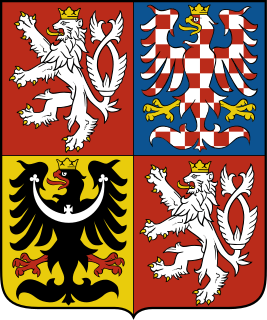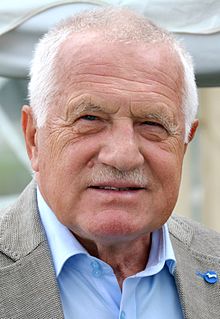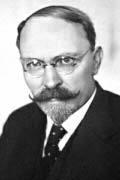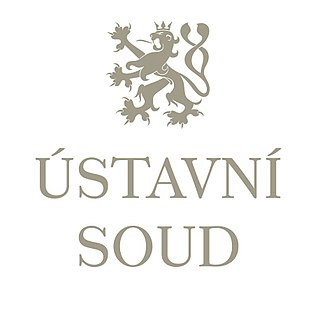
Czechoslovakia, or Czecho-Slovakia, was a sovereign state in Central Europe, created in October 1918, when it declared its independence from Austria-Hungary.

Czech Republic is a unitary parliamentary constitutional republic, in which the President is the head of state and the Prime Minister is the head of government.
Executive power is exercised by the Government of the Czech Republic which reports to the Chamber of Deputies. The Legislature is exercised by the Parliament. Czech Parliament is bicameral, the upper house of the Parliament is the Senate, the lower house of the Parliament is the Chamber of Deputies. The Senate consists of 81 members who are elected for six years. The Chamber of Deputies consists of 200 members who are elected for four years. The Judiciary system is topped by the trio of Constitutional Court, Supreme Court and Supreme Administrative Court.
The highest legal document is the Constitution of the Czech Republic, complemented by constitutional laws and the Charter of Fundamental Rights and Freedoms. The current constitution went in effect on 1 January 1993, after the Dissolution of Czechoslovakia.
Politics of Slovakia takes place in a framework of a parliamentary representative democratic republic, with a multi-party system. Legislative power is vested in the parliament and it can be exercised in some cases also by the government or directly by citizens.

Václav Klaus is a Czech economist and politician who served as the second president of the Czech Republic from 2003 to 2013. From July 1992 until the dissolution of Czechoslovakia in January 1993, he served as the second and last prime minister of the Czech Republic while it was a federal subject of the Czech and Slovak Federative Republic, and then as the first prime minister of the newly independent Czech Republic from 1993 to 1998.

The President of the Czech Republic is the head of state of the Czech Republic and the commander-in-chief of the Armed Forces of the Czech Republic.
The First Czechoslovak Republic emerged from the collapse of the Austro-Hungarian Empire in October 1918. The new state consisted mostly of territories inhabited by Czechs and Slovaks, but also included areas containing majority populations of other nationalities, particularly Germans (22.95 %), who accounted for more citizens than the state's second state nation of the Slovaks, Hungarians (5.47 %) and Ruthenians (3.39 %). The new state comprised the total of Bohemia whose borders did not coincide with the language border between German and Czech. Despite initially developing effective representative institutions alongside a successful economy, the deteriorating international economic situation in the 1930s gave rise to growing ethnic tensions. The dispute between the Czech and German populations, fanned by the rise of National Socialism in neighbouring Germany, resulted in the loss of territory under the terms of the Munich Agreement and subsequent events in the autumn of 1938, bringing about the end of the First Republic.

The Constitutional Act on the Czechoslovak Federation was a constitutional law in Czechoslovakia adopted on 27 October 1968 and in force from 1969 to 1992. It converted the previously unitary Czechoslovak state into a federation.
With the collapse of the Habsburg monarchy at the end of World War I, the independent country of Czechoslovakia was formed as a result of the critical intervention of U.S. President Woodrow Wilson, among others.

The Constitution of the Czech Republic is the supreme law of the Czech Republic. The current constitution was adopted by the Czech National Council on 16 December 1992. It entered into force on 1 January 1993, replacing the 1960 Constitution of Czechoslovakia and the constitutional act No. 143/1968 Col., when Czechoslovakia gave way to the Slovak Republic and the Czech Republic in a peaceful dissolution.

The president of the Slovak Republic is the head of state of Slovakia and the commander-in-chief of the Armed Forces. The president is directly elected by the people for five years, and can be elected for a maximum of two consecutive terms. The presidency is largely a ceremonial office, but the president does exercise certain limited powers with absolute discretion. The president's official residence is the Grassalkovich Palace in Bratislava.
The Dissolution of Czechoslovakia took effect on January 1, 1993, and was the self-determined split of the federal republic of Czechoslovakia into the independent countries of the Czech Republic and Slovakia. Both mirrored the Czech Socialist Republic and the Slovak Socialist Republic, which had been created in 1969 as the constituent states of the Czechoslovak Federal Republic.

The Beneš decrees were a series of laws drafted by the Czechoslovak government-in-exile in the absence of the Czechoslovak parliament during the German occupation of Czechoslovakia in World War II. They were issued by President Edvard Beneš from 21 July 1940 to 27 October 1945 and retroactively ratified by the Interim National Assembly of Czechoslovakia on 6 March 1946.

The Senate of the Parliament of the Czech Republic, usually referred to as Senate, is the upper chamber of the Parliament of the Czech Republic. The seat of the Senate is Wallenstein Palace in Prague.

The First Czechoslovak Republic, often colloquially referred to as the First Republic, was the first Czechoslovak state that existed from 1918 to 1938, dominated by ethnic Czechs and Slovaks, the country was commonly called Czechoslovakia, a compound of Czech and Slovak; which gradually became the most widely used name for its successor states. It was composed of former territories of Austria-Hungary, inheriting different systems of administration from the formerly Austrian and Hungarian territories.

The Pětka, or Committee of Five, was an unofficial informal extraparliamentary semi-constitutional political forum that was designed to cope with political difficulties of the First Republic of Czechoslovakia. Founded in September 1920, it was a council of leaders of the coalition parties that made up the Czechoslovak government. Its name came from the Czech word for "five" and is pronounced pyetka. It played a crucial role in the country's politics.
State decorations of the Czech Republic recognize outstanding acts of service to the Czech Republic. They are awarded by the President of the Czech Republic, usually, but not necessarily, on the recommendation of the Chamber of Deputies, the Senate or the Prime Minister of the Czech Republic. They may also be promulgated solely on the president's authority. They come in two varieties: orders being the higher honor and medals the lower.

The Constitutional Court of the Czech Republic is a specialized type of court which primarily works to protect the people in the Czech Republic against violations of the Constitution by either the legislature, government or by any other subject that violates people's constitutional rights and freedoms. In this respect, it is similar in functionality to the Supreme Court of the United States, but is distinct from the Supreme Court of the Czech Republic. Of all the various levels of the Czech Judiciary it is the one created with the greatest specificity in the constitution.

Czechoslovakism is a concept which underlines reciprocity of the Czechs and the Slovaks. It is best known as an ideology which holds that there is one Czechoslovak nation, though it might also appear as a political program of two nations living in one common state. The climax of Czechoslovakism fell on 1918-1938, when as a one-nation-theory it became the official political doctrine of Czechoslovakia; its best known representative was Tomáš Masaryk. Today Czechoslovakism as political concept or ideology is almost defunct; its remnant is a general sentiment of cultural affinity, present among many Czechs and Slovaks.

Edvard Beneš was a Czech politician and statesman who served as the president of Czechoslovakia from 1935 to 1938 and again from 1945 to 1948. He also led the Czechoslovak government-in-exile 1939 to 1945, during World War II.
This article describes ethnic minorities in Czechoslovakia from 1918 until 1992.











